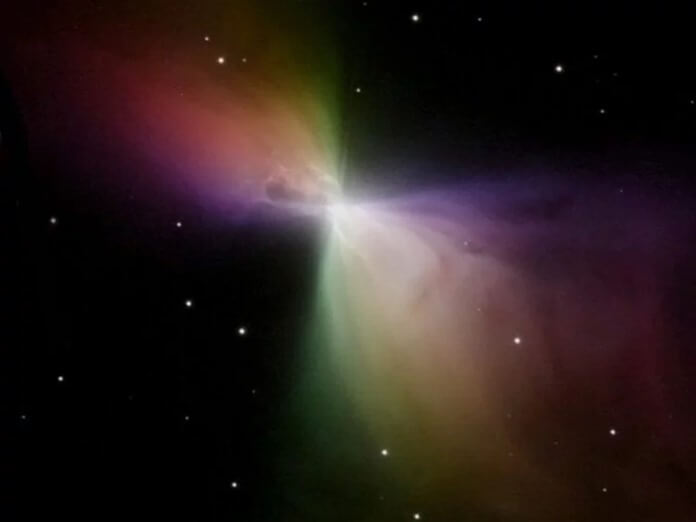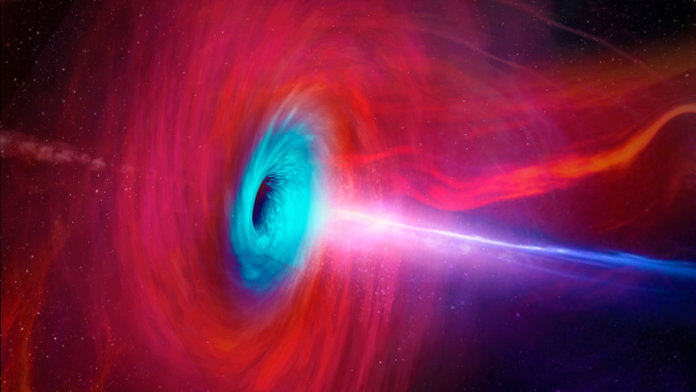The universe is huge and terrible. Not only because we, figuratively speaking, barely scratched with the tip of our finger the surface of what is outside our blue-green ball. But also because most of what we have found can kill us instantly and without regret.
Here are 10 of the creepiest things in the known universe
10. Zombie stars come back to life by stealing matter from nearby stars
Such stars - white dwarfs - are called "Type Ia Supernovae" (Ia Supernovas). They are nearly dead, but can be reborn if they are in a tight binary system. In this case, matter may begin to flow from the donor star to the white dwarf.
And so it will continue until the "star zombie" sucks out enough matter to go supernova and spew its "guts" throughout the universe.
9. Galaxies-cannibals
Cannibalism is a taboo topic in most places on Earth. However, in the endless depths of space there are cannibals, always ready to devour smaller "relatives". And one of these monsters is located relatively close to us.
About two billion years ago, the Andromeda galaxy actually devoured the sister galaxy of the Milky Way. And approximately in 4.5 billion years the same fate awaits the Milky Way. Anyone who lives up to this moment will have an amazing light show!
8. Coldest place in the universe
To live in coldest city in the world not easy. But there are much colder places in the universe. That's like the Boomerang Nebula, which has a temperature of -272 ° C.
In appearance, this nebula resembles a bow tie, but only Mr. Frost could wear it on an unimaginably huge scale.

It owes its formation to the flow of gas from a central star or an entire star system. It travels at a speed of 600,000 km / h while expanding rapidly. This expansion makes the nebula so cold. It may not be the scariest part of space, but you can't call it a resort either.
7. Harmony of beauty and death on the planet HD 189733 A b
In the constellation Chanterelle is a blue planet, which rains from molten glass. Due to the proximity to the parent star, the temperature on the surface of HD 189733 A b reaches 930 C on the bright side and 425 C on the dark side.
Obviously, this beautiful planet will kill you instantly if you decide to walk on its surface.
The original hypothesis was that there is a lot of water in the atmosphere of this planet. However, later studies found that the colors of HD 189733 A b are due to the presence of silicate particles in its atmosphere. They scatter visible light in the blue part of the spectrum.
6. Great attractor
The Great Attractor, aka the Great Center of Gravity, is a real astrological anomaly. It is something that lies in the far reaches of space, and has a huge gravitational attraction. It captures almost everything that is nearby. The mass of the Great Attractor is 10 quadrillion times the mass of the Sun.
Strange is the fact that the detected mass of galactic clusters is not enough to justify such a large gravitational pull. A zone of avoidance is an area in the plane of the Milky Way that is so densely occupied by star, galaxies, and cosmic dust that it obscures visible light, preventing scientists from observing distant galaxies. This is important because this is where the Great Attractor is located.
And behind it, in the region of the Shapley supercluster, an even more massive cluster of galaxies was found.
What's so terrible about that? The very existence of the Great Attractor speaks of how little we know about outer space, and that in every corner of the universe there are potential variables in the great game of humanity and space.
5. The darkest planet in the Universe
TrEs-2b is an incredibly sinister place, akin to cosmic Hell. This black gas giant reflects less than 1% of all light that comes from outside. Therefore TrEs-2b has been officially named the darkest planet ever discovered by NASA.
Its impenetrable darkness is partly due to the absorption of light by gases that occupy most of the planet's surface.
Despite this, astronomers are still not entirely sure how this planet can be as incredibly dark and incredibly hot. TrES-2b glows bright red as its surface is heated to 1100 degrees Celsius.
When commercial intergalactic travel becomes a reality, it's safe to assume TrES-2b won't be a very popular vacation destination.
4. A trillion lightning bolts in a black hole
One of the most incredible things in the universe is at the center of a galaxy known as 3C303. A supermassive black hole was discovered there, which is not uncommon in the case of most galaxies. What makes it special is the magnetic fields that generate the largest electric current in the history of the universe. - 10 amps to the 18th power.
This electrical current is equivalent to one trillion lightning strikes on Earth combined. In other words, this current can do little more than make your hair stand on end.
Lightning on its own can be pretty scary, especially at close range. Anyone who has ever faced a violent storm can attest to this. But remember that even the most violent storms on our planet are just child's play for this great leviathan of electricity behind the stars.
3. Supervoid Eridanus
Another scientific anomaly that has the potential to turn everything we know about space upside down is the Eradan Supervoid, or Relic Cold Spot. It is a huge and completely empty area in space. Its width is about 500 million light years, and its depth is billions of light years, and there is no trace of ordinary matter or dark matter. Absolute nothing.
What's more, the sheer size of the Supervoid makes it the largest thing in our universe discovered by NASA to date.
Even more frightening is that scientists have no clear-cut answers to how this empty pocket came to be. Some researchers even suggest that Supervoid is the creation of a giant black hole, or even an imprint of another universe outside ours.
2. Hypervelocity stars
This name is given to stars rushing through space at a breakneck speed. This happens when a pair of stars are captured by the gravitational pull of their galaxy's black hole. While one of these stars simply disappears into the void, the other is ejected into space as a result of a massive and sudden change in gravity at speeds as high as 10,000 kilometers per second.
Hypervelocity stars travel so fast that they can free themselves from gravity and travel through the universe without restrictions. Imagine, if you will, a massive sun that quickly penetrates space like a knife through butter.Imagine the devastation this could cause to any poor planet that lies in its path. And worst of all, these stars are more than just a concept: they are reality.
1. Wandering black holes
Black holes, as most people know, is a region of space-time that has such a strong gravitational attraction that it does not release objects moving at the speed of light. Even quanta of the light itself disappear in it.
In general, black holes are extremely scary on their own. On the other hand, at least most of them are perfectly content with their position and remain motionless. However, there are black holes that are more adventurous in nature. They are known as wandering black holes.
These black holes travel aimlessly throughout the universe, engulfing everything and everyone in their path. Even more alarming, they are moving at about 5,000,000 kilometers per hour, or about 1,389 kilometers per second. And nobody knows what is on the other side of the black hole. At least, if you stand in the path of an accelerating star, the result will be obvious.
But the Mysterious World Eaters is a completely different story, and the fact that some of them are on the move does not inspire optimism.

